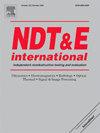主成分分析与机器学习在扫描声学显微镜半导体微缺陷检测中的比较研究
IF 4.5
2区 材料科学
Q1 MATERIALS SCIENCE, CHARACTERIZATION & TESTING
引用次数: 0
摘要
精确检测半导体结构中的微观缺陷对于确保下一代电子器件的可靠性至关重要。本研究提出了主成分分析(PCA)和残差神经网络(ResNet)方法在扫描声学显微镜(SAM)无损检测中的比较评价。将10 μm ~ 500 μm范围内的人工缺陷嵌入到硅晶片中,在多个焦点深度处采集超声a扫描信号。三种类型的输入数据(原始波形、频域信号和合并的多深度波形)使用c模式成像、PCA和基于resnet的分类进行分析。PCA在不同的焦深范围内表现稳定,特别是在缺陷≥20 μm时,以最小的预处理捕获主要信号变化。但其对亚分辨率缺陷(≤10 μm)的灵敏度有限。相比之下,ResNet在良好对准焦点条件下检测精细尺度缺陷方面表现出优异的性能。然而,在焦位失调的情况下,模型的性能有下降的趋势。本文章由计算机程序翻译,如有差异,请以英文原文为准。
A comparative study of principal component analysis and machine learning for semiconductor micro-defect detection using scanning acoustic microscopy
Accurate detection of microscopic defects in semiconductor structures is essential to ensure the reliability of next-generation electronic devices. This study presents a comparative evaluation of principal component analysis (PCA) and residual neural network (ResNet) methods for non-destructive defect detection using scanning acoustic microscopy (SAM). Artificial defects ranging from 10 μm to 500 μm were embedded in bonded silicon wafers, and ultrasonic A-scan signals were collected at multiple focal depths. Three types of input data (raw waveforms, frequency-domain signals, and merged multi-depth waveforms) were analyzed using C-mode imaging, PCA, and ResNet-based classification. PCA demonstrated stable performance across varying focal depths, especially for defects ≥20 μm, capturing dominant signal variations with minimal preprocessing. However, its sensitivity to sub-resolution defects (≤10 μm) was limited. In contrast, ResNet showed superior performance in detecting fine-scale defects under well-aligned focus conditions. However, the model performance tended to degrade under focal misalignment conditions.
求助全文
通过发布文献求助,成功后即可免费获取论文全文。
去求助
来源期刊

Ndt & E International
工程技术-材料科学:表征与测试
CiteScore
7.20
自引率
9.50%
发文量
121
审稿时长
55 days
期刊介绍:
NDT&E international publishes peer-reviewed results of original research and development in all categories of the fields of nondestructive testing and evaluation including ultrasonics, electromagnetics, radiography, optical and thermal methods. In addition to traditional NDE topics, the emerging technology area of inspection of civil structures and materials is also emphasized. The journal publishes original papers on research and development of new inspection techniques and methods, as well as on novel and innovative applications of established methods. Papers on NDE sensors and their applications both for inspection and process control, as well as papers describing novel NDE systems for structural health monitoring and their performance in industrial settings are also considered. Other regular features include international news, new equipment and a calendar of forthcoming worldwide meetings. This journal is listed in Current Contents.
 求助内容:
求助内容: 应助结果提醒方式:
应助结果提醒方式:


